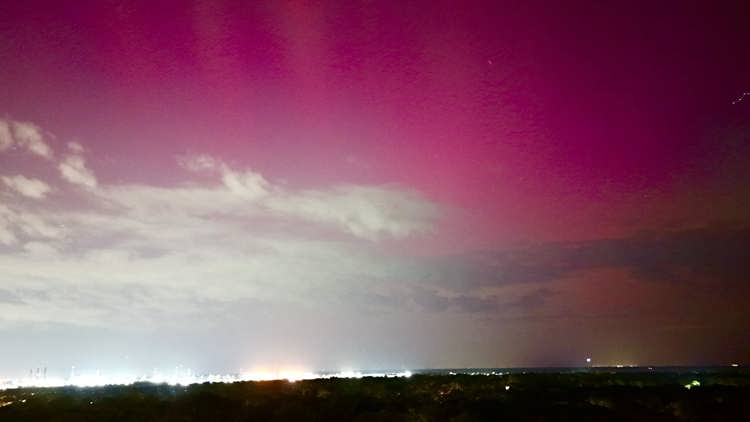JACKSONVILLE, Fla. — It all came down to timing, Friday night a CME (Coronal Mass Ejection) impacted the Earth just after sunset on the East Coast of the United States creating a historic solar storm at a level that was the highest since October 2003.
This particular event over performed as well pushing the northern lights south and became visible even into the tropics. Even after the sun came up in the United States and North America this event remained on going into the Eastern Hemisphere. Auroras were seen in Japan and Australia and then again in Europe.
Yet as the sun set over North America including the USA the planetary K Index used to measure this phenomena dropped right off to levels much to low for an Aurora to visible in the northern United States yet alone Florida.


A Geomagnetic Storm Watch remains in place Sunday as another CME is expected to arrive producing another significant round of Auroras globally. If this next round remains bright enough it could be visible again Sunday night before the storm starts to completely wane out. This all of course depends on many factors and has a high degree of uncertainty. Plus for many there may be to much cloud cover to get a good view of lights if they do develop.
How rare is it for Florida including Jacksonville? The last time Jacksonville and the first coast could see the northern lights was March 13, 1989. Prior to that, it was in September of 1941 during the Aurora blitz. The last time we had a storm of this magnitude anywhere on Earth was in October of 2003 during the Halloween Solar Event of that year.
What caused it?: The display of the Northern Lights was a result of multiple coronal mass ejections (CMEs) emitted by the sun and directed towards Earth on Friday. As these charged particles from the sun collided with the Earth's magnetosphere, they ignited a surge in geomagnetic activity, reaching the highest level recorded for a Geomagnetic storm, classified as a G5. This interaction between solar particles and Earth's magnetic field created the perfect conditions for the Northern Lights to be visible as far south as southern Florida.
Understanding the Northern Lights: The Northern Lights, also known as Aurora Borealis, occur when charged particles from the sun collide with gases in Earth's atmosphere, such as oxygen and nitrogen. These collisions emit light in various colors, resulting in the mesmerizing display of vibrant hues dancing across the night sky. The different colors observed, including shades of green, pink, and purple, are determined by the type of gas particles involved in the collision and their altitude in the atmosphere.



























